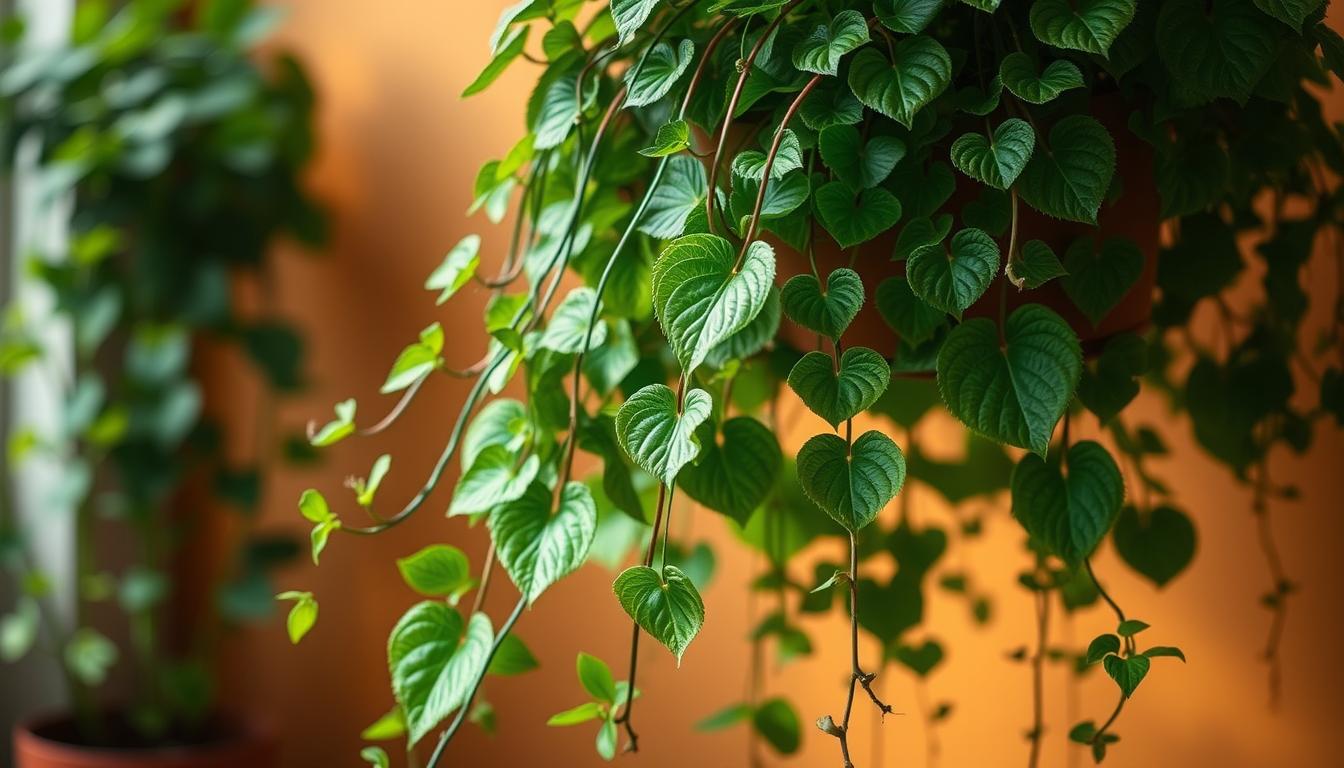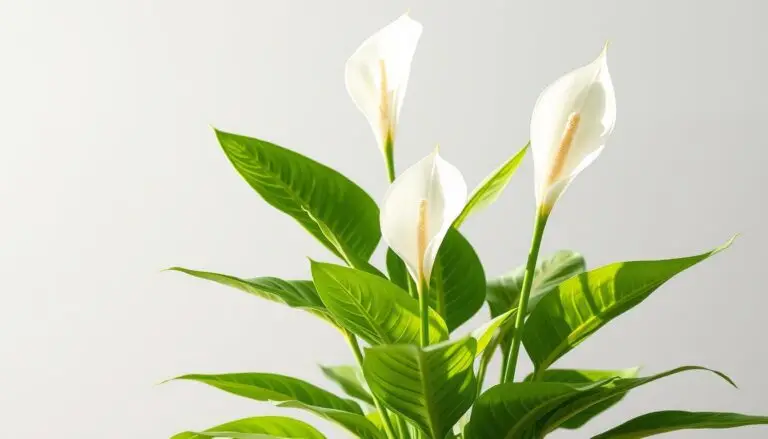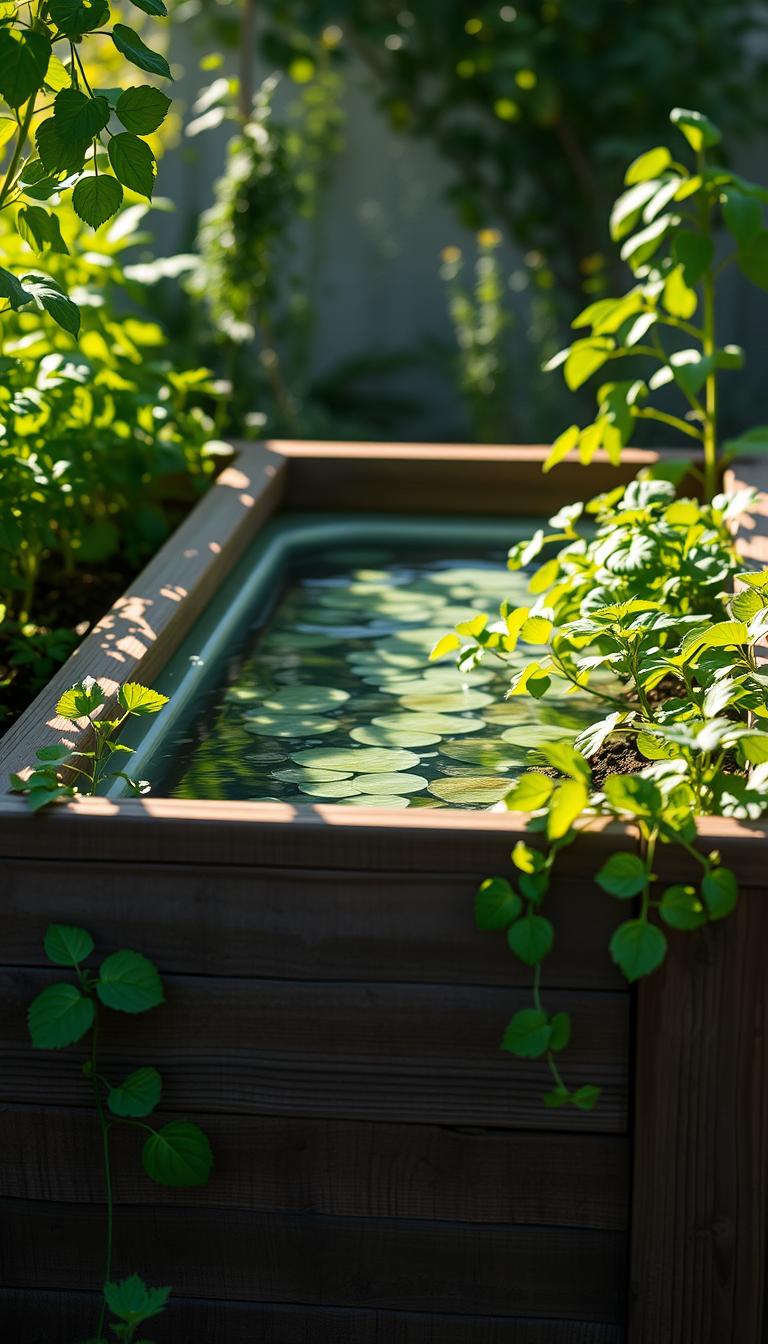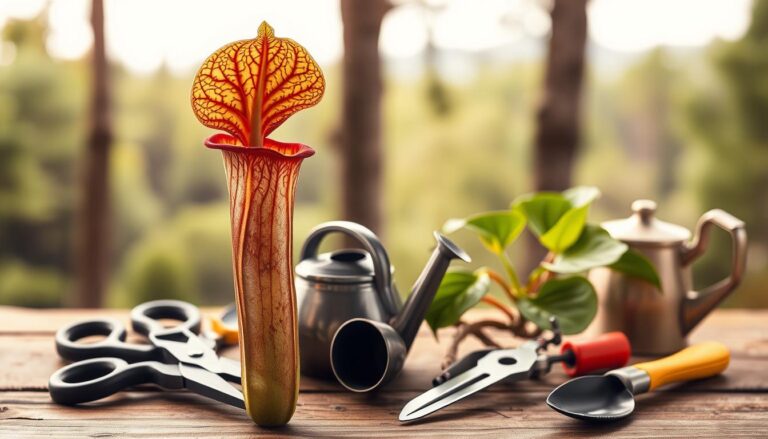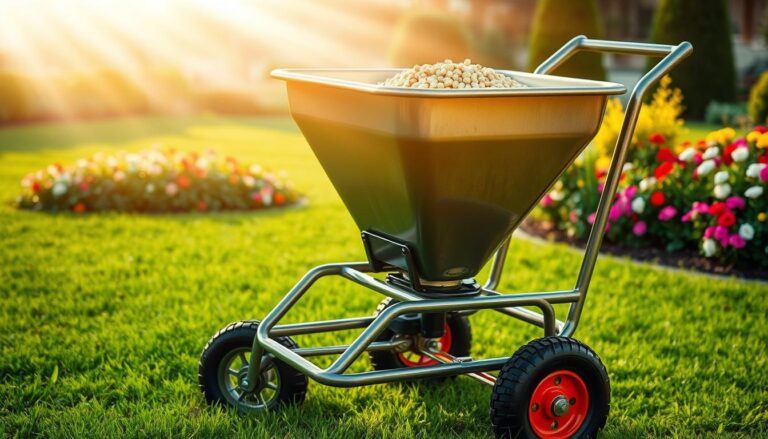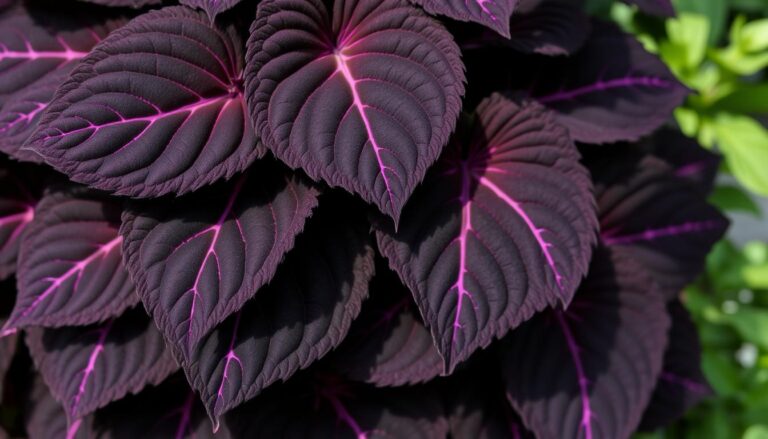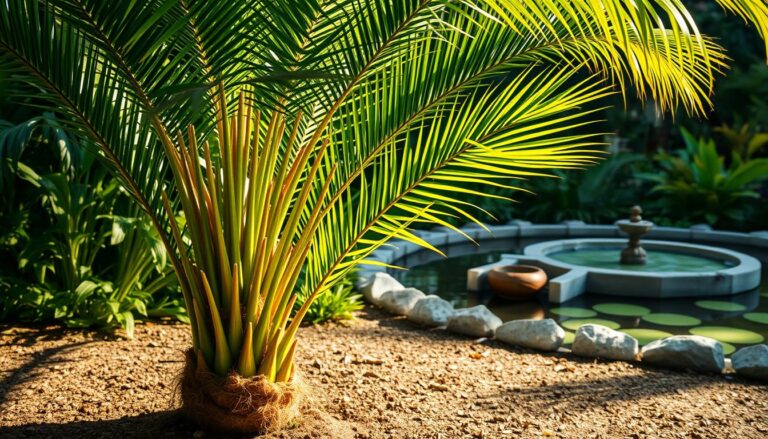Wandering jew plant care : Tips for Healthy Growth
wandering jew plant care ? Have you ever walked into a room and felt instantly calmed by lush greenery? Indoor companions like the vibrant Tradescantia do more than brighten shelves—they transform homes into living art. I still remember rescuing my first trailing beauty from a clearance rack. Today, its purple-and-silver leaves cascade over my bookshelf, reminding me that even resilient plants thrive with intentional care.
Often called by its traditional name, this striking foliage belongs to multiple species within the Tradescantia family. Its adaptability makes it ideal for busy lifestyles, requiring just a few simple routines to maintain its jewel-toned charm. Whether you’re new to indoor gardening or refining your skills, nurturing these fast-growing varieties offers instant gratification.
This guide shares science-backed strategies tailored to your environment. You’ll learn how to balance light exposure, choose the right soil mix, and multiply your collection through easy propagation. We’ll also tackle common challenges like leggy stems or unwanted pests—all explained in plain language without jargon.
Table of Contents
Introduction to the Wandering Jew
Have you ever spotted a cascade of silver-striped leaves tumbling from a hanging basket? That’s likely Tradescantia, a genus native to Central and South America. While traditionally called by a name now considered outdated, many gardeners prefer terms like “wandering dude” or “inch plant” to describe these fast-growing species.
Origins, Varieties, and Common Names
Three main varieties dominate homes: Tradescantia zebrina with metallic stripes, T. fluminensis bearing glossy green foliage, and T. pallida showcasing deep purple leaves. Their trailing stems adapt effortlessly to shelves or macramé hangers, creating living curtains of color.
Each type offers unique leaf patterns—some with pink edges, others with silver-blue shimmer. Botanists classify them under Commelinaceae, a family known for resilient, moisture-loving plants. Fun fact: the “inch plant” nickname comes from how quickly cuttings root in soil.
Why This Plant Is a Favorite Houseplant
Gardeners adore these species for their forgiving nature. They tolerate occasional missed waterings and thrive in various light conditions. Their vivid foliage adds instant visual interest, whether displayed in terracotta pots or modern geometric planters.
Keep pets away, though—the sap may irritate curious cats or dogs. Outdoors in warm climates, they can spread aggressively. Indoors, their contained growth makes them ideal for small spaces. Just rotate pots weekly to ensure even sun exposure for balanced color development.
wandering jew plant care
What does it take to keep those vibrant leaves thriving? Start by mastering three core elements: hydration, sunlight, and foundation. Get these right, and your trailing beauty will reward you with rapid growth and striking coloration.
Understanding Its Basic Needs
Check soil dryness before reaching for the watering can. Insert your finger up to the first knuckle—if the top ½ inch feels dry, it’s time to hydrate. Overly damp roots lead to trouble, so let the mix approach dryness between drinks.
Bright, indirect light keeps patterns crisp and colors bold. East-facing windows work perfectly, filtering harsh rays while providing ample energy. Rotate pots weekly to prevent lopsided growth.
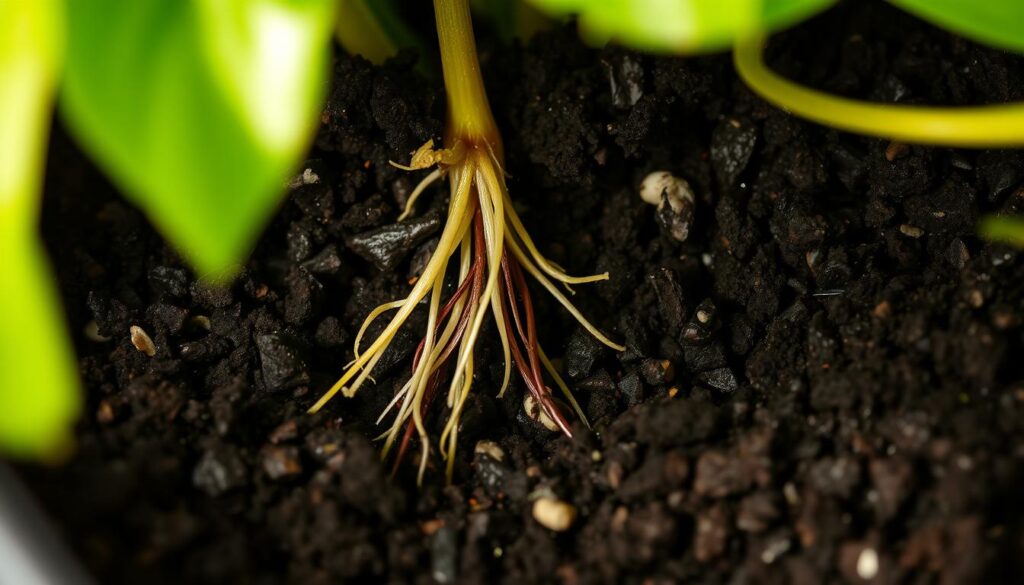
Your Tradescantia thrives in airy, nutrient-rich potting soil. Blend standard mixes with perlite and compost for improved drainage and moisture retention. This combo prevents waterlogging while delivering steady nutrients.
Drainage holes are non-negotiable. Pair them with saucers to catch excess water, protecting surfaces from drips. Remember: consistent care routines prevent stress, making advanced techniques easier later.
Optimal Light and Soil Conditions
Light acts as nature’s paintbrush for foliage coloration. Position your Tradescantia within three feet of an east- or north-facing window where rays filter through sheer curtains. This setup delivers the bright indirect light needed to maintain jewel-toned leaves without scorching delicate tissues.
Balancing Sun Exposure and Soil Quality
Direct afternoon sun bleaches vibrant stripes and causes crispy edges. If your space lacks natural brightness, LED grow lights placed 12 inches above the foliage offer a safe alternative. Rotate pots weekly to ensure all sides receive equal illumination.
The right soil mix prevents root suffocation. Combine standard potting soil with 30% perlite and 20% peat moss for optimal drainage. This blend mimics their natural habitat—moist but never waterlogged. Test your mix by squeezing a handful: it should hold shape briefly before crumbling.
Yellowing leaves often signal poor drainage. Repot using coarse sand or orchid bark if water pools on the surface. Remember: healthy roots need oxygen as much as hydration. Pair your well-draining medium with containers featuring multiple holes at the base.
When these elements align, expect rapid growth and leaves that glow like stained glass. Check stems monthly—compact spacing between leaves confirms ideal light levels, while stretched gaps suggest relocation needs.
Watering, Humidity, and Temperature Tips
Finding the sweet spot between hydration and humidity keeps your trailing foliage vibrant. These tropical natives crave consistency—too much water drowns roots, while dry air dulls leaf patterns. Let’s break down practical methods to maintain ideal conditions year-round.
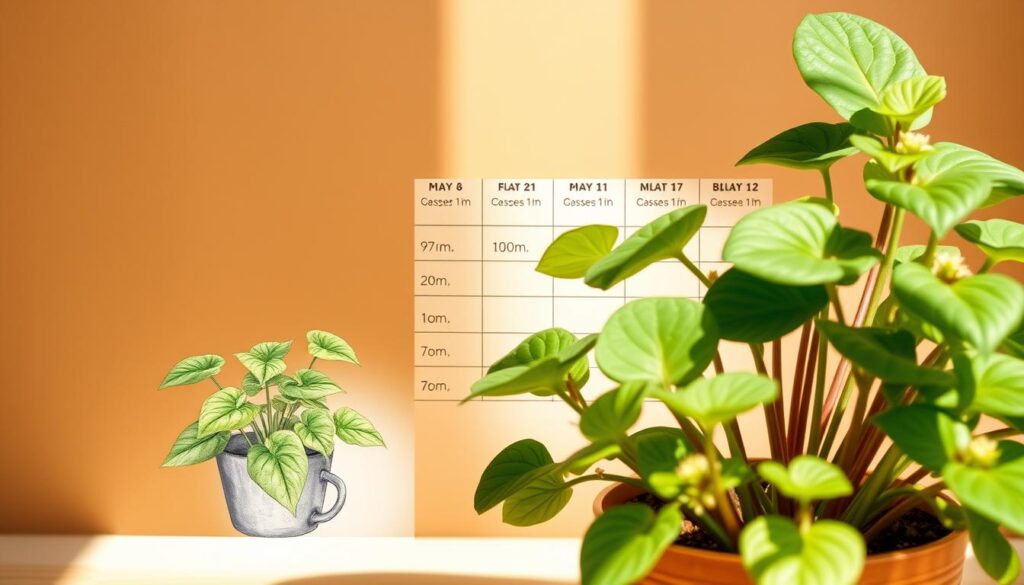
Establishing an Effective Watering Routine
Use the knuckle test: insert your finger into the soil up to the first joint. If it feels dry, pour ½ cup of water for a 5-inch pot. In typical indirect light, this occurs every 9 days. Adjust based on your home’s conditions—heaters or AC units may speed up drying.
| Pot Size | Water Amount | Frequency |
|---|---|---|
| 5″ | 0.5 cups | 9 days |
| 7″ | 1 cup | 7 days |
| 10″ | 1.5 cups | 5 days |
Maintaining Ideal Humidity and Temperature
Boost humidity to 60-70% using a pebble tray or room humidifier. Mist leaves weekly in arid climates, but avoid soaking stems. Keep temperatures between 60-80°F—anything below 50°F risks cold damage.
Winter demands adjustments: reduce water to every 12-14 days as growth slows. Watch for curled leaves—they signal thirsty roots or dry air. Pair consistent drainage with stable warmth to prevent soggy soil and stressed foliage.
Pruning, Propagation, and Repotting Strategies
Ever noticed how some plants look fuller while others get scraggly? Strategic trimming and timely repotting transform sparse stems into lush cascades. These techniques maintain vibrant growth while expanding your collection effortlessly.
Techniques for Pruning to Encourage Bushiness
Pinch off stem tips regularly using clean fingernails or sterilized scissors. This triggers side shoots to sprout below the cut, creating denser foliage. Always cut just above a leaf node at a 45-degree angle—this prevents water from pooling on the surface.
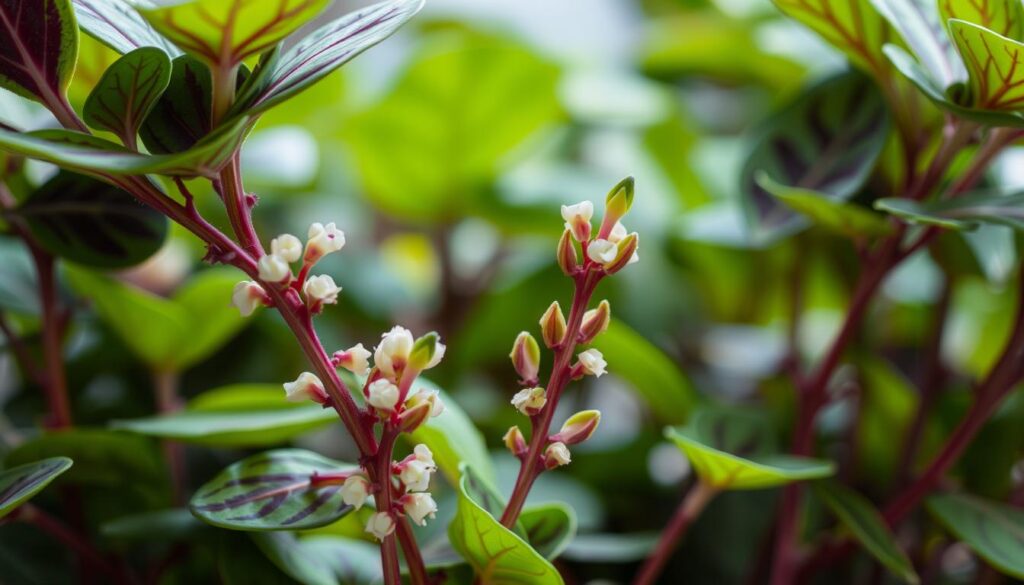
Step-by-Step Guide to Propagation and Repotting
Snip 4-6″ cuttings below a node, removing lower leaves. Place them in water or moist soil—roots typically emerge in 7 days. For repotting, choose a container 1-2 inches wider than the current pot. Gently loosen tangled roots and use fresh, well-draining soil.
Space plants 3″ apart when grouping multiple cuttings in one pot. Water thoroughly after replanting, then wait until the topsoil dries before hydrating again. Pro tip: Propagate during spring for faster root development.
Make sure tools are disinfected with rubbing alcohol to prevent disease spread. With consistent care, new growth appears within weeks, rewarding you with thicker foliage and vibrant trailing stems.
Nutrient Management and Fertilization
Just like people need balanced meals, your trailing foliage requires strategic feeding. The right fertilizer approach keeps leaves vibrant and stems strong—but overdoing it can harm roots. Let’s explore how to nourish without overwhelming.
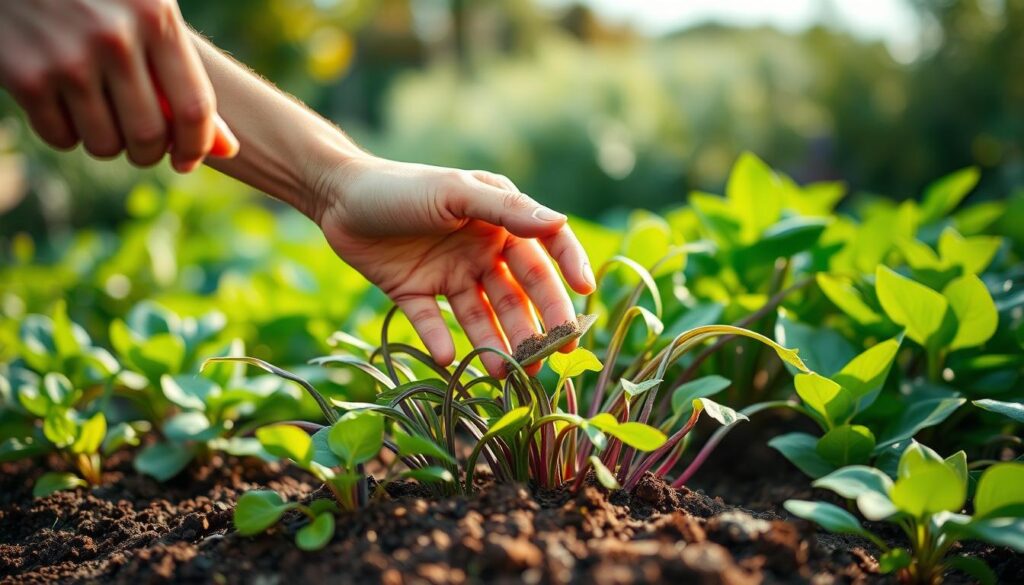
Smart Feeding: Liquids vs. Time-Released Options
Water-soluble fertilizers offer precise control. Dilute them to half strength and apply every two weeks during spring and summer. This method works well if you enjoy hands-on care. Slow-release pellets simplify routines—mix them into potting soil during repotting for steady growth.
| Type | Frequency | Benefits | Best For |
|---|---|---|---|
| Water-Soluble | Every 2 weeks | Quick nutrient boost | Active growing season |
| Slow-Release | Every 3 months | Low maintenance | Busy plant owners |
Watch for pale leaves or stunted stems—these signal hunger. Repot when roots circle the container’s base. Fresh potting mix replenishes nutrients naturally. As one gardener notes: “Plants in cramped pots are like athletes wearing tight shoes—they can’t perform.”
Stop fertilizing in winter when growth slows. Always water before applying nutrients to prevent root burn. Pair feeding schedules with your home’s light conditions—brighter spaces may need more frequent doses.
Managing Pests and Preventing Diseases
What’s eating your vibrant leaves? Early detection and smart prevention keep your trailing foliage thriving. Watch for subtle changes in texture or color—these clues help you act before minor issues escalate.
Identifying Common Pests and Signs of Stress
Tiny webs under leaves signal spider mites. These pests drain sap, leaving yellow spots on foliage. For aphids, look for sticky residue on stems. Wipe affected leaves with a 50/50 water-rubbing alcohol mix, then spray neem oil weekly.
| Pest | Signs | Immediate Action | Prevention |
|---|---|---|---|
| Spider Mites | Webbing, stippled leaves | Isolate plant; mist daily | Boost humidity above 50% |
| Aphids | Clusters on new growth | Blast with water stream | Apply insecticidal soap monthly |
Tactics to Prevent Overwatering and Root Rot
Soggy soil invites root rot—a fungal issue causing mushy stems. Let the top inch of soil dry before watering. Add perlite to your potting mix for better drainage. If roots turn brown, trim damaged parts and repot in fresh soil.
Place plants near an east-facing window for indirect light that deters mold growth. Remove fallen leaves promptly to eliminate pest breeding grounds. As one grower advises: “Dry soil between drinks is cheaper than replacing roots.”
Conclusion
Transform your space with cascading foliage that thrives on simple routines. Your wandering jew flourishes when given bright indirect light, well-draining potting soil, and consistent moisture checks. Remember: let the topsoil dry slightly between water sessions to protect delicate roots.
Regular trimming keeps stems bushy while creating new cuttings for propagation. Pair this with monthly feeding during spring and summer to maintain those iconic striped leaves on varieties like Tradescantia zebrina. A humidity level above 50% prevents crispy edges without needing daily misting.
Stay alert for subtle changes in foliage texture—early pest detection saves weeks of recovery time. Adjust your routine seasonally: reduce water in winter and rotate pots monthly for even sunlight exposure.
By implementing these tips, you’ll witness vibrant growth that spills over shelves or hangs elegantly from baskets. Start today—your thriving indoor oasis awaits with just a few mindful adjustments.

